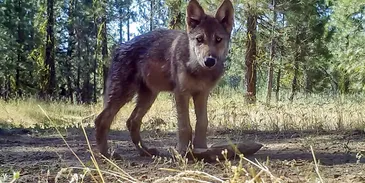Pallas’s cat (Otocolobus manul), also known as the manul, is a small, stocky wild cat native to the cold, arid steppes and rocky grasslands of Central Asia. It is instantly recognizable by its dense, fluffy coat, flat face, and low-set, rounded ears, giving it a unique and expressive appearance. The fur is gray with faint stripes and helps the cat blend into its rocky surroundings while providing insulation against extreme cold. Solitary and elusive, Pallas’s cat is primarily crepuscular and preys on small mammals like pikas and voles. Despite its rugged adaptations, it is considered near-threatened due to habitat loss and declining prey.


My First Reaction Was Disbelief – Spotted Hyena Seen in Egypt for First Time in 5,000 Years [Discover Wildlife – January 22, 2025]
What’s This Story About: A spotted hyena was spotted—and killed—in southeastern Egypt, marking the species’ first confirmed presence there in 5,000 years. Found 500km north of its expected range, this unexpected sighting has scientists scrambling to understand what it was doing so far from home.
Why This Story: This incident raises serious questions about shifting habitats, climate pressures, and fragmented ecosystems. That a lone hyena wandered into unfamiliar terrain—and was immediately killed for acting like a predator—says more about human intolerance than natural behavior.

The Indigenous Range of the Tiger (Panthera tigris) [Diversity and Distribution, a Journal of Conservation Biogeography – January 18, 2025]

A new wolf pack, irate ranchers, and the astonishing comeback of California’s most celebrated predator [San Francisco Chronicle – October 13, 2024]
What’s This Story About: A newly formed wolf pack has been spotted in Northern California, marking a major milestone in the species’ return to the region. While conservationists are celebrating the comeback, local ranchers are voicing concern over livestock safety and increased tension with wildlife.
Why This Story: It’s challenging to call the wolf’s return to northeastern California a government conspiracy when the critters came back on their own.
More accurately and appropriately, you can call their return a great example of natural rewilding. Wolves belong in California us much as we humans do, both species are native to the area.